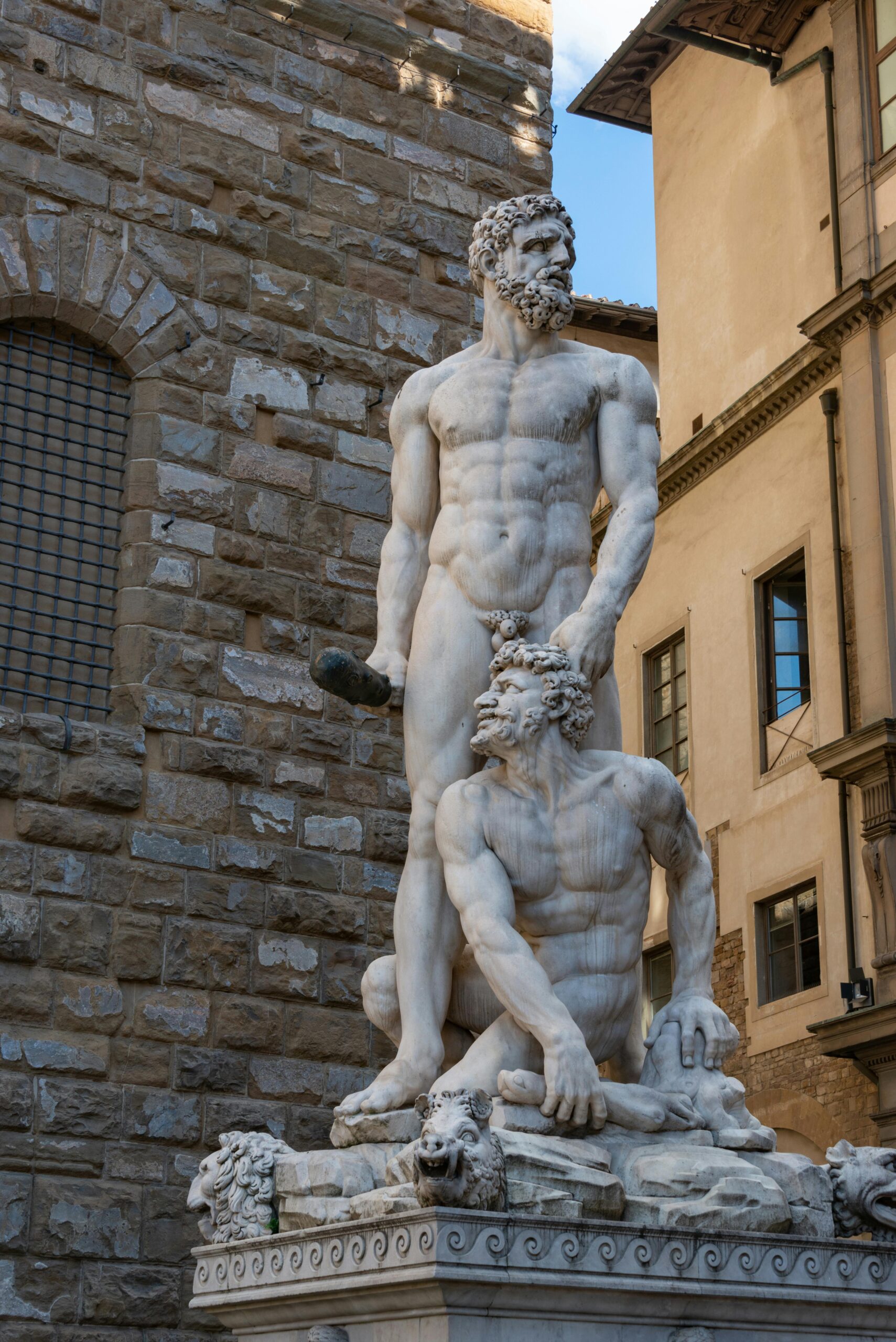

In the vibrant heart of Florence, right in Piazza San Lorenzo, stands the monument to Giovanni delle Bande Nere, member of Medici Family. This Renaissance masterpiece is more than just a statue; it is a story of power, irony, and personal revenge, all sculpted in stone. And indeed, the essence of Eternal Revenge in Marble lies not in the figure of the condottiero himself, but in the dramatic details carved on the base.
A Condottiero Worthy of Legends
Giovanni delle Bande Nere was no ordinary military leader. His very name already sounds like the beginning of an epic saga, evoking battles, strategy, and courage. The statue portrays him in a martial and meditative pose, almost as if he were preparing for an eternal campaign. Yet, the real narrative emerges when one looks at the pedestal beneath him.
Here, Eternal Revenge in Marble unfolds in vivid sculptural storytelling.
The Relief: Power and Eternity
The bas-relief decorating the base is far from a simple embellishment. Instead, it stages a theatrical scene: Giovanni graciously receiving prisoners of war. His clemency recalls the magnanimity of Julius Caesar himself. The figures wear ancient armor, resembling Roman sarcophagi heroes, evoking a sense of timeless power.
It is important to note that Baccio Bandinelli, the Florentine sculptor behind the monument, deliberately drew inspiration from imperial Roman funerary monuments. This decision was not merely aesthetic but also symbolic, designed to grant Giovanni delle Bande Nere an aura of eternal glory and imperial might.
For more context on Renaissance sculpture in Florence, you can visit Uffizi Galleries Official Website.
The Hidden Sarcasm in Stone
However, the most surprising detail is far from heroic. If one looks carefully, one can spot a man lifting a pig—or better said, a wild boar eager to take the spotlight. This is no random farm animal. It is, in fact, a sharp insult set in marble.
Bandinelli used this pig to represent Baldassarre Turini, a cleric and his sworn enemy. Turini had once accused him in Rome of negligence and dishonesty, sparking a feud that Baccio, with his famously fiery temperament, never forgave. And so, Eternal Revenge in Marble becomes more than a monument; it becomes a permanent act of satire.
This detail reveals much about Florence in the 16th century: a city where even artists fought battles not only with brush and chisel but also with wit and irony. For a broader exploration of this fascinating era, take a look at Visit Florence Renaissance Guide.
Art, Irony, and Personal Vendetta
Bandinelli’s decision to immortalize his personal feud in such a public work shows how art could serve both as celebration and as weapon. It was a reminder that in Florence, even marble could be a battlefield. Transitioning from admiration to amusement, the viewer realizes that the monument is not just about military glory. It is about pride, resentment, and the eternal human need to have the last word an Eternal Revenge in Marble .
For more on Bandinelli’s artistic rivalry, see Encyclopedia Britannica – Baccio Bandinelli.
A Timeless Lesson in Stone
Ultimately, the monument to Giovanni delle Bande Nere is not just a tribute to a great condottiero. It is also a theatrical stage, where clemency, power, irony, and personal vendetta coexist in carved marble. Thanks to Bandinelli’s genius—and spite—the statue remains a fascinating lesson on how art and life intertwine.
Thus, Eternal Revenge in Marble stands as a testimony to Renaissance Florence: a place where nothing was ever forgotten, and where even a pig could speak louder than words.
For travelers eager to discover this monument in person, you can learn more about its location at Museums of Florence – Piazza San Lorenzo.



